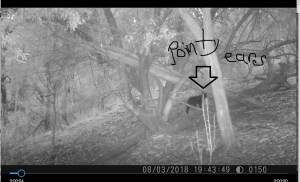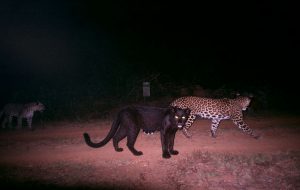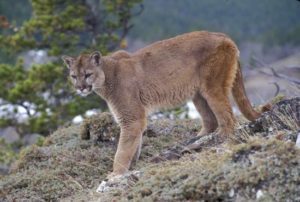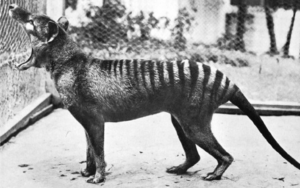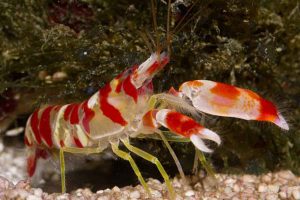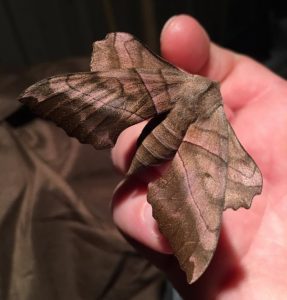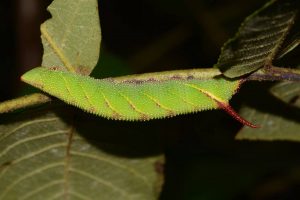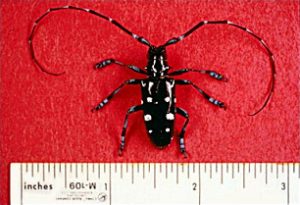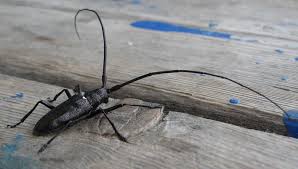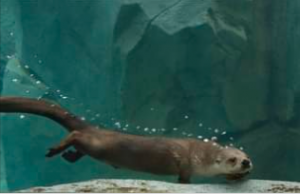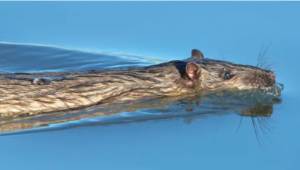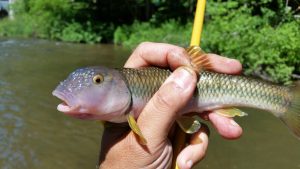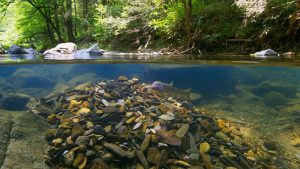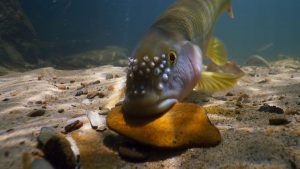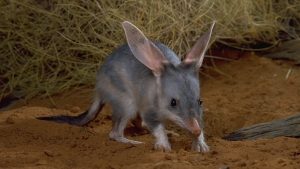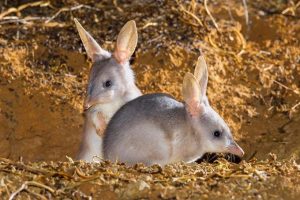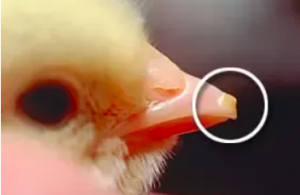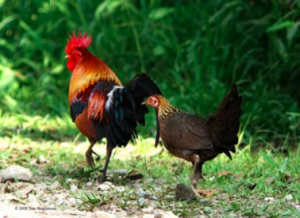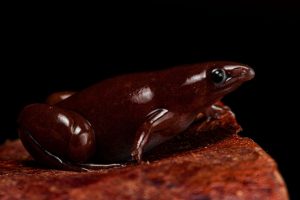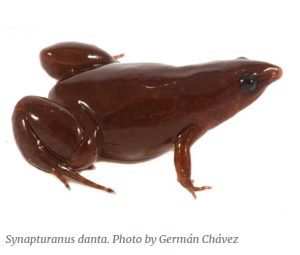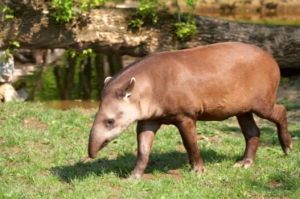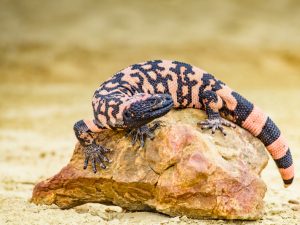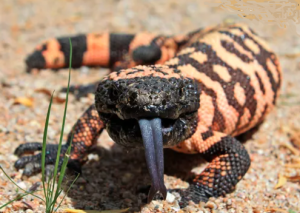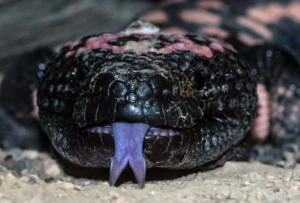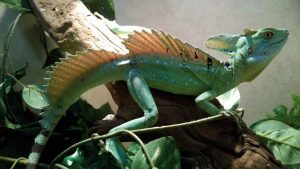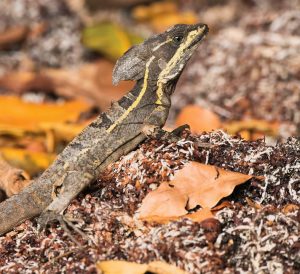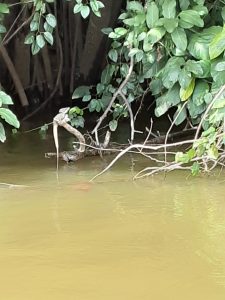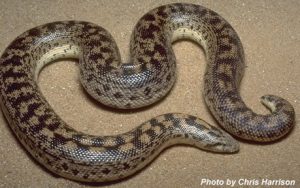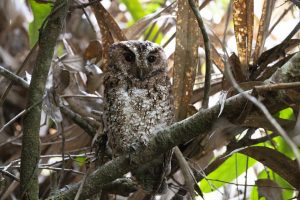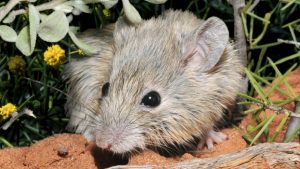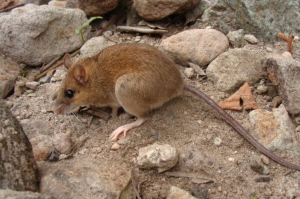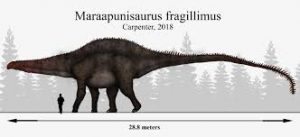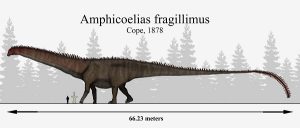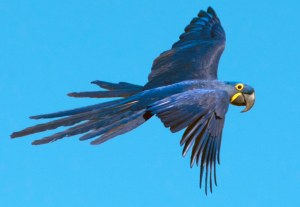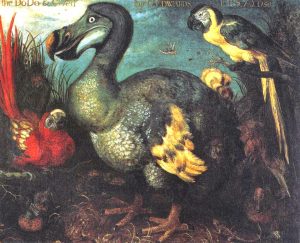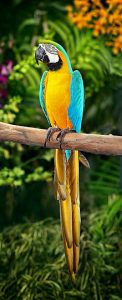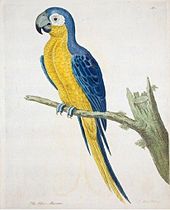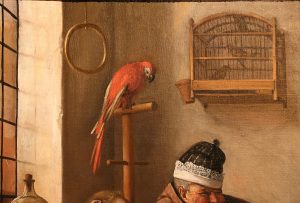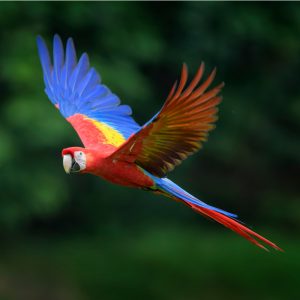Podcast: Play in new window | Download (Duration: 18:14 — 13.8MB)
This week it’s Zoe and Dillon’s episode! They wanted to learn about some really interesting salamanders, including the axolotl and the hellbender!
A big birthday shout-out to Heather R. too. The very happiest of birthdays to you!
Further reading:
Mexico City’s endangered axolotl has found fame—is that enough to save it?
Most wild axolotls are brown:
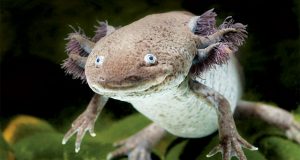
Most captive-bred axolotls are leucistic:
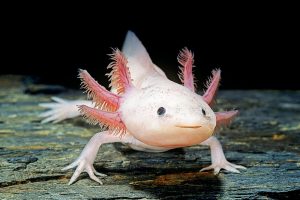
The hellbender doesn’t have external gills as an adult:
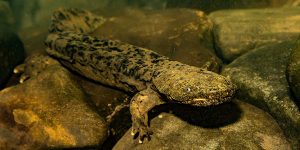
The red eft, the juvenile stage of the red-spotted newt:
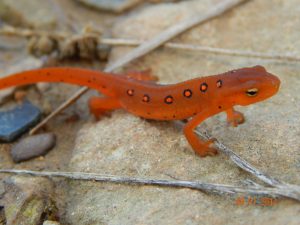
Adult mudpuppies have external gills just like axolotls do:
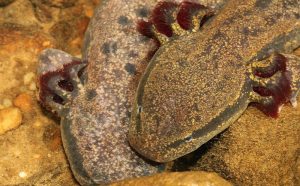
Show transcript:
Welcome to Strange Animals Podcast. We’re your cohosts, Zoe and Dillon. And I’m your third cohost, Kate Shaw.
This week we have Zoe and Dillon’s episode, and they want to learn about the axolotl, the hellbender, and some other salamanders. It’ll be the greatest amphibian episode ever!
But first, we have a birthday shout-out! Happy birthday to Heather R.! I hope the weather is perfect for your birthday and you get to go out and appreciate it.
So, let’s start with the axolotl, because everyone loves it! “Axolotl” isn’t the way it’s pronounced in its native country of Mexico, since it comes from the name of an Aztec god of fire and lightning, but it’s the common pronunciation in English so I’m going to stick with that one. In addition to Zoe and Dillon, at least one other listener has suggested we cover the axolotl. That would be Rosy, and I apologize to anyone else who suggested it but whose name didn’t make it onto the suggestions list.
Way back in episode 104, about tiger salamanders, we learned that the tiger salamander is closely related to the axolotl. But the two species look very different most of the time because the axolotl exhibits a trait called neoteny. In most salamanders, the egg hatches into a larval salamander that lives in water, which means it has external gills so it can breathe underwater. It grows and ultimately metamorphoses into a juvenile salamander that spends most of its time on land, so it loses its external gills in the metamorphosis. Eventually it takes on its adult coloration and pattern. But the axolotl doesn’t metamorphose. Even when it matures, it still looks kind of like a big larva, complete with external gills, and it lives underwater its whole life.
Very rarely, an axolotl metamorphoses into an adult form, at which point it looks a whole lot like a tiger salamander. This generally happens if the individual is exposed to excess iodine in its diet, and metamorphosing like this may actually lead to the axolotl’s death. Axolotls exhibit neoteny because it gives them an advantage in their natural range, so even though it seems strange to us compared to all those other salamanders, it’s what the axolotl is supposed to do.
The axolotl’s natural range is very specific. Originally it lived in two large, cold lakes in the Valley of Mexico. This is where Mexico City is and it’s been a hub of civilization for thousands of years. A million people lived there in 1521 when the Spanish invaded and destroyed the Aztec Empire with introduced diseases and war. The axolotl was an important food of the Aztecs and the civilizations that preceded them, and if you’ve only ever seen pictures of axolotls you may wonder why. Salamanders are usually small, but a full-grown axolotl can grow up to 18 inches long, or 45 cm, although most are about half that length.
Also if you’ve only ever seen pictures of axolotls you may think they’re all white or pink. That’s actually rare in the wild. Most wild axolotls are brown, greenish-brown, or gray, often with lighter speckles. They can even change color somewhat to blend in with their surroundings better.
It’s captive axolotls that are so often white or pink, or sometimes other colors or patterns. That’s because they’re bred for the pet trade and for medical research, because not only are they cute and relatively easy to keep in captivity, they have some amazing abilities. Their ability to regenerate lost and injured body parts is remarkable even for amphibians, but, interestingly, axolotls that have been induced to metamorphose have much less regeneration ability. Researchers study axolotls to learn more about how regeneration works, how vertebrates evolved various aspects of anatomy, how genetics of coloration work, and much more. They’re so common in laboratory studies that you’d think there’s no way they could be endangered—but they are. Some conservationists think there may be as few as 50 individuals left in the wild.
The main problem is habitat loss. One lake where the axolotl was once found is completely gone, drained to control flooding and provide more land for people to use. The other lake isn’t so much a lake anymore as a series of canals in Mexico City, and they’re polluted and home to introduced species of fish that eat axolotl eggs. Even though part of their range was designated as a nature reserve in 1993, that hasn’t done much to stop the pollutants or invasive fish.
Not only that, the captive-bred axolotls are so different from their wild cousins that some people think they should be considered a different species. You couldn’t take a pet axolotl and dump it into a lake and expect it to live. Conservation efforts in Mexico are focusing on a captive breeding program of axolotls caught in the wild. Since the salamander’s native range isn’t healthy right now, the group is trying to establish temporary homes in university ponds prepared just for that purpose. So far the project is a success.
At the same time, conservationists and just regular people who like axolotls are working hard to get its native habitat cleaned up. This includes educating people about the axolotl, and helping people set up small farms that use traditional methods that don’t require fertilizer or insecticides that run off into the water. These farms are called chinampas and are made up of artificial islands with canals around them. The islands actually help filter pollutants from the surrounding water, and the canals are ideal for axolotls to live in. The farmers also install screens with filters to keep invasive fish out and clean up the water even more, and some of the captive-bred wild axolotls have been introduced to these canals successfully.
Even though the axolotl has external gills to collect oxygen from the water, it has lungs too. It will sometimes gulp air from the surface, but most of the time it gets all the oxygen it needs from its gills. It eats small animals like worms, insects, and even small fish, but while it does have tiny teeth, they’re actually vestigial. The axolotl doesn’t chew its food but instead sucks its prey whole right down into its stomach.
We talked about the hellbender briefly in episode 14, but that was five years ago. In fact, it was exactly five years ago. Episode 14 was released on May 8, 2017, and this episode is being released on May 9, 2022. I swear I did not plan it that way but it’s pretty neat.
The hellbender has a restricted range too, although it’s not as restricted as the axolotl’s. It lives in parts of the eastern United States, especially in the Appalachian Mountains and the Ozarks. It can grow nearly 30 inches long, or 74 cm, and is heavy for its size, up to 5.5 lbs, or 2.5 kg. This is the fifth heaviest amphibian alive today in the whole world! It needs clean, shallow, fast-moving streams with lots of rocks, because it spends almost all its life in the water hiding among rocks. But the rocks are important for another reason too. As water rushes over and around rocks, it splashes around and absorbs more oxygen. Well-oxygenated water helps the hellbender breathe, which is even more complicated than it sounds.
Like other salamanders, the hellbender hatches from eggs laid in the water and at first are just big tadpoles with external gills. They metamorphose in stages until they’re full grown at almost two years old, at which point they lose their gills, although they may retain a nonfunctioning gill slit. The adult hellbender has large lungs, but it doesn’t use them for breathing. They’re just for buoyancy. The hellbender absorbs oxygen from the water through its skin, which is why it needs well-oxygenated water flowing quickly across it all the time. To increase its surface area and help it absorb that much more oxygen, its skin is loose and has folds along the sides.
The hellbender is flattened in shape, which helps it hide under rocks and helps keep it from being swept away by currents when it’s moving around in the water. It’s brown with black speckles on its back. It mostly eats crawdads, also called crayfish, but it will eat small fish and amphibians, tadpoles, the eggs of frogs and fish, and in fact it will also eat the eggs of other hellbenders. Occasionally a hellbender will eat a smaller hellbender too. It’s a solitary animal except during breeding season, and even then, once the female has laid her eggs in a nest the male makes and the male fertilizes them, the pair don’t spend any time together. The male actually chases the female away. Then he spends the next few months guarding the eggs and making sure they get enough oxygen by waving his tail and skin folds over them.
The hellbender doesn’t have very good eyesight, although it has a good sense of smell. It’s very territorial and seldom leaves the small stretch of water where it lives and hunts. Very occasionally it will leave the water and walk around on land. Most of the time it walks around underwater, though, instead of swimming. Its toes have rough pads that help it walk even on slippery rocks. During the day, though, it usually hides under its home rock. Its skin contains light-sensitive cells, which are mostly concentrated in its tail. This means that it can actually sense how much light is shining on its body even if its head is hidden under a rock. The reason its tail has more light-sensing cells is because its tail is more likely to be sticking out from under its rock. Since a lot of animals eat the hellbender, it needs to be fully hidden by its rock during the day.
Some people think the hellbender is poisonous or venomous, but it’s actually completely harmless unless you are a very small aquatic animal.
Because salamanders, like other amphibians, have to keep their skin moist, they’re vulnerable to water pollution. Any pollutants in the water are liable to be absorbed into the salamander’s body, which can make it sick. Habitat loss, disease, and invasive species are also major causes of declines in salamander species.
Salamanders have been around for at least 180 million years. Amphibians in general probably developed from lobe-finned fish around 360 million years ago. A study published in 2020 examined 3D scans of skulls from 148 species of salamander to compare minute differences and learn more about how they evolved. Animals that undergo metamorphosis, including salamanders, have very different skulls from animals that don’t, since different parts of the skull develop in stages independently of other parts. The study found that while salamanders have always been metamorphic, different life cycles have evolved separately at least eleven times.
One of the things Zoe asked in particular was whether salamanders actually breathe through their nostrils. It depends on the species. Salamanders are definitely complicated when it comes to breathing. Like many amphibians, the salamander doesn’t have special muscles to move air in and out of its lungs the way mammals do. Instead, it moves air in and out by gular pumping, also called buccal pumping.
A salamander lowers the floor of its mouth, expanding the throat, which pulls air into the throat by way of the nostrils. Then the salamander closes its nostrils and raises the floor of its throat. This causes the air to enter the lungs. It does the same process in reverse to breathe out. That’s why salamanders and other amphibians appear to be gulping all the time. That’s how they breathe.
Complicated as this sounds, the salamander doesn’t have to concentrate to do it any more than we have to concentrate to breathe. Also, even if it mostly gets oxygen through its lungs, all salamanders appear to be able to absorb a certain amount of oxygen through the skin too.
Zoe and Dillon were especially interested in salamanders that live in their part of the world, which is the state of Pennsylvania in the eastern United States. In addition to the hellbender, there are several dozen salamander species known from Pennsylvania, and probably quite a few that haven’t been discovered yet. This includes the red-spotted newt, which lives in forests in muddy or wet areas. It grows up to about 5 inches long, or 13 cm, and eats insects, worms, frog eggs and tadpoles, and other small animals.
As an adult, the red-spotted newt is greenish-brown, often with a row of red spots outlined with black along its sides and tiny black dots all over, and a yellow or orange belly. The adult mostly lives in the water, but during the juvenile stage it mostly lives on land and can travel widely, especially after rain. It also looks very different during the juvenile stage, with a bright orangey-red body and spots outlined with black, which is why it’s often called a red eft. An eft is a juvenile salamander. The bright red coloring may tell you not to eat the red eft, because it’s poisonous! Its skin contains toxins that make it taste bad and can make a potential predator sick.
Another salamander common throughout Pennsylvania is the spotted salamander, which can grow almost 10 inches long, or 24 cm. It’s a big, strong salamander that’s black or gray with big yellow or orangey spots all over. As a juvenile it looks very similar, although smaller, but with tiny spots or no spots.
Finally, to wrap around to where we started, another large species of salamander that lives in parts of western Pennsylvania, and other nearby areas, is the mudpuppy. It looks a lot like a juvenile hellbender but isn’t as big, with the largest measured adult growing just over 17 inches long, or almost 44 cm. Like the axolotl, the mudpuppy exhibits neoteny. It lives in lakes, ponds, and streams and retains its gills throughout its life. Its gills are large and reddish in color. If a mudpuppy lives in your pond or backyard stream, you can be sure the water is clean because its gills are very sensitive to pollutants.
The mudpuppy spends most of its time under rocks and walking along the bottom of the lakebed or streambed, looking for food. It’s gray, black, or reddish-brown, sometimes with speckles or spots. It has a lot of tiny teeth where you’d expect to find teeth, and more teeth on the roof of its mouth where you would not typically expect to find teeth. It needs all these teeth because it eats slippery food like small fish, worms, and frogs, along with insects and other small animals.
Even though the mudpuppy has all those teeth, it’s harmless to humans and just wants to be left alone, but that’s pretty much the case for all salamanders. And some people.
You can find Strange Animals Podcast at strangeanimalspodcast.blubrry.net. That’s blueberry without any E’s. If you have questions, comments, or suggestions for future episodes, email us at strangeanimalspodcast@gmail.com. If you like the podcast and want to help us out, leave us a rating and review on Apple Podcasts or Podchaser, or just tell a friend. We also have a Patreon at patreon.com/strangeanimalspodcast if you’d like to support us for as little as one dollar a month and get monthly bonus episodes.
Thanks for listening!
